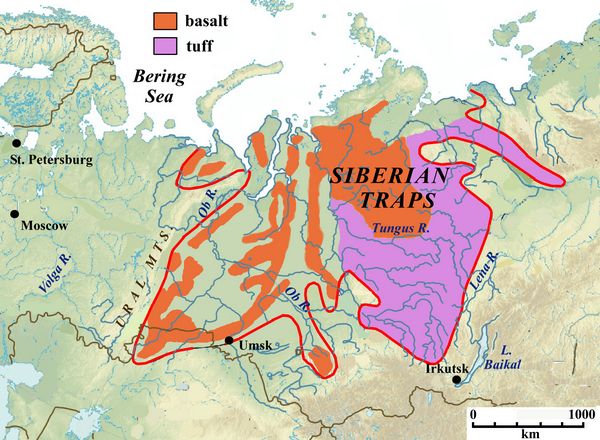Athena Review Image Archive ™
Map of Siberian Traps volcanic region

Siberian Traps volcanic region (map: Athena Review)
The Siberian traps are vast ranges of volcanic hills in Siberia, located between the Ural Mountains and Lake Baikal. They are mainly composed of basalt and tuff formations, which resulted from lava and ash expelled at the time of the Permian- Triassic boundary at 252-251 mya.
Given the concordance of dates, these lava and ash concentrations in the atmosphere are considered to have been a main factor in the end-of-Permian extinction event, when over 75% of all organisms became extinct. This includes nearly all of the therapsid, mammal-like reptiles of the Late Permian period, as well as many reptile, amphibian, fish, and invertebrate taxa, in addition to many plants. Affecting most known land and marine organisms, this is considered the largest extinction event in the earth's history (Benton 2005).
The
Permian-Triassic boundary also marks the dividing point between
the Paleozoic and Mesozoic biota. In the absence of the large,
carnivorous therapsids (synapsids) which had been the top predators of
the Late Permian period, diapsid reptiles grew in size and became the
dominant species of the Mesozoic era, including the Triassic, Jurassic,
and Cretaceous period, lasting from 251-65 mya. Among the few synapsids who
survived the extinction, the cynodonts became the much
smaller, mainly nocturnal ancestors of early mammals.
Reference:
Benton, M.J. 2005. When life nearly died: the greatest mass extinction of all time. London: Thames & Hudson.
Copyright © 1996-2020 Rust Family Foundation (All Rights Reserved).